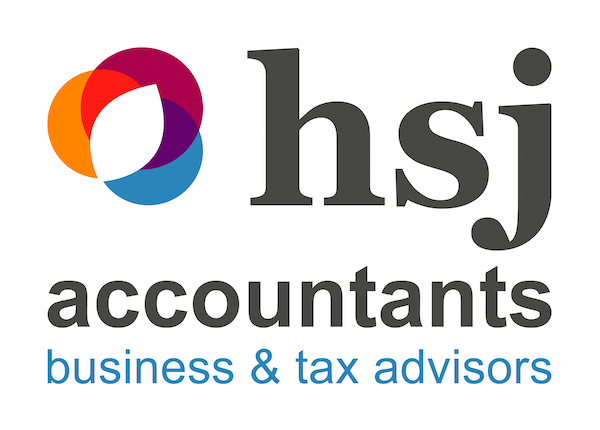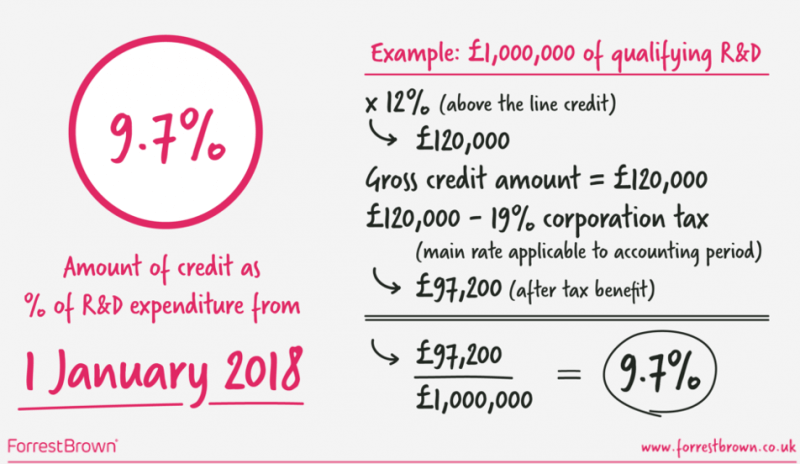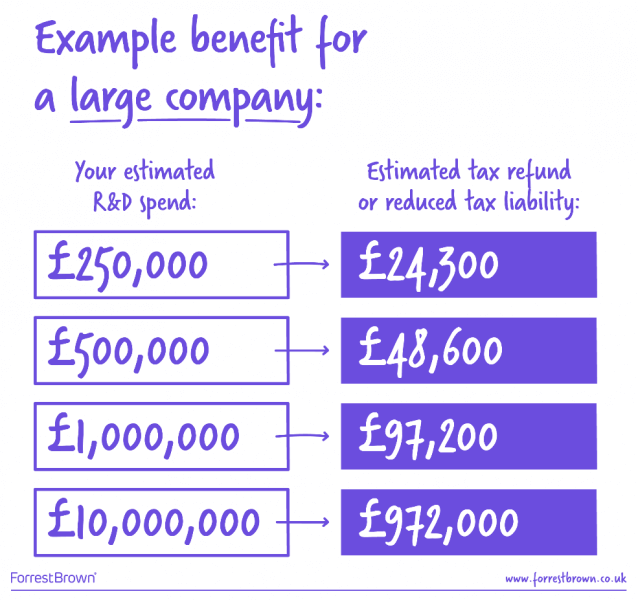In the Autumn 2017 budget, Philip Hammond announced a rate change for the RDEC tax incentive for large companies. To support the government’s Industrial Strategy and promote further innovation in the UK, the RDEC rate has now been increased from 11% to 12%. This rate change means large businesses can recoup more of their research and development (R&D) spend to reinvest back in to their innovation projects.
RDEC: what is it?
RDEC stands for Research and Development Expenditure Credit and is one of two government tax incentives designed to reward private sector investment in innovation. Large UK companies subject to Corporation Tax can now claim up to 10p for every £1 spent on qualifying R&D activities.
If you are an SME, you are usually eligible to claim via the SME R&D tax credit scheme which offers a more generous rate – up to 33p for every £1 spent. However, in some cases, due to a business’ ownership model or funding position, an SME may need to claim partly, or completely, via the RDEC scheme.
Increased generosity for large companies
As of 1 January 2018, the RDEC rate increased from 11% to 12%. This increase is the second since the scheme’s introduction. It is particularly generous for large companies who have already benefitted from Corporation Tax reducing from 20% to 19% as of 1 April 2017.
Why have they made this change?
The government has increased the rate as part of its Industrial Strategy. We believe it has put public and private sector investment in R&D at the heart of its strategy. It sees R&D as a solution to the productivity problems that were also highlighted in the recent Budget – and as a means to transform the UK economy.
HMRC has estimated that for every £1 of tax foregone, R&D tax incentives promote £2.35 of R&D spending. This is good news for the economy. We know from our own clients – some of which we share with HSJ Accountants – that those claiming this incentive often invest the cash in advancing their R&D further, hiring new staff and ultimately growing their businesses.
The government has rewarded large companies in particular as they spend a significant amount on R&D activities. The average large company has £6.5 million of qualifying expenditure.
What does the change mean in practice?
The new rate means that RDEC is now worth up to 10p for every £1 spent on qualifying R&D, up from 9p for every £1 spent.
Below is an example calculation of how this might work for your business with qualifying R&D expenditure of £1,000,000.
The exact value of your claim will depend on your qualifying R&D activities and costs. For example:
RDEC: the basics
R&D tax credits can potentially be very valuable to businesses – particularly when you consider how they might use that cash boost to help them grow. But how do you know if you qualify?
What qualifies as R&D?
If you are taking a risk by attempting to ‘resolve scientific or technological uncertainties’, then you may be carrying out qualifying R&D. R&D doesn’t just apply to people in white coats in laboratories, it can take place in businesses of any size or sector. If you are creating new products, processes or services, or modifying existing ones, then you should consider claiming.
What costs qualify?
Once you’ve established that you qualify, you will need to determine what your qualifying costs are. For RDEC, you can include the following expenditure in your RDEC claim:
- A proportion of your staffing costs.
- Money spent on some subcontractor / freelancer costs.
- Expenditure on consumables and materials that are used up or transformed in the R&D process; such as heat, light and power.
- Some software costs.
- Money paid to clinical trial volunteers.
- Contributions to independent research.
RDEC can be useful for SMEs too.
It’s not only large companies that can claim via the RDEC scheme. Often, SMEs wrongly believe that they do not qualify for R&D tax credits because they are grant-funded or part of a larger group.
Here at ForrestBrown we would recommend that if you are grant funded that you, without exception, consider claiming R&D tax credits. Depending on the nature of the grant, it may be that you can claim using both the RDEC and SME R&D tax credit schemes, or just via the RDEC scheme. If you are carrying out qualifying activities and have qualifying costs, it’s also worth considering making a claim even if you are part of a group.
Both situations require expert help to ensure your funding position is fully maximised, but technically correct. If you are in any doubt as to whether you might qualify, we’d be happy to discuss your specific circumstances and provide an informal eligibility assessment free of charge. Equally, if you are already claiming, but would you like a review of your claim for peace of mind, please get in touch.
Contact Natalie Staples-Vvind Tax Manager at HSJ on 01633 81580 or natalie.vvind@hsj.uk.com




